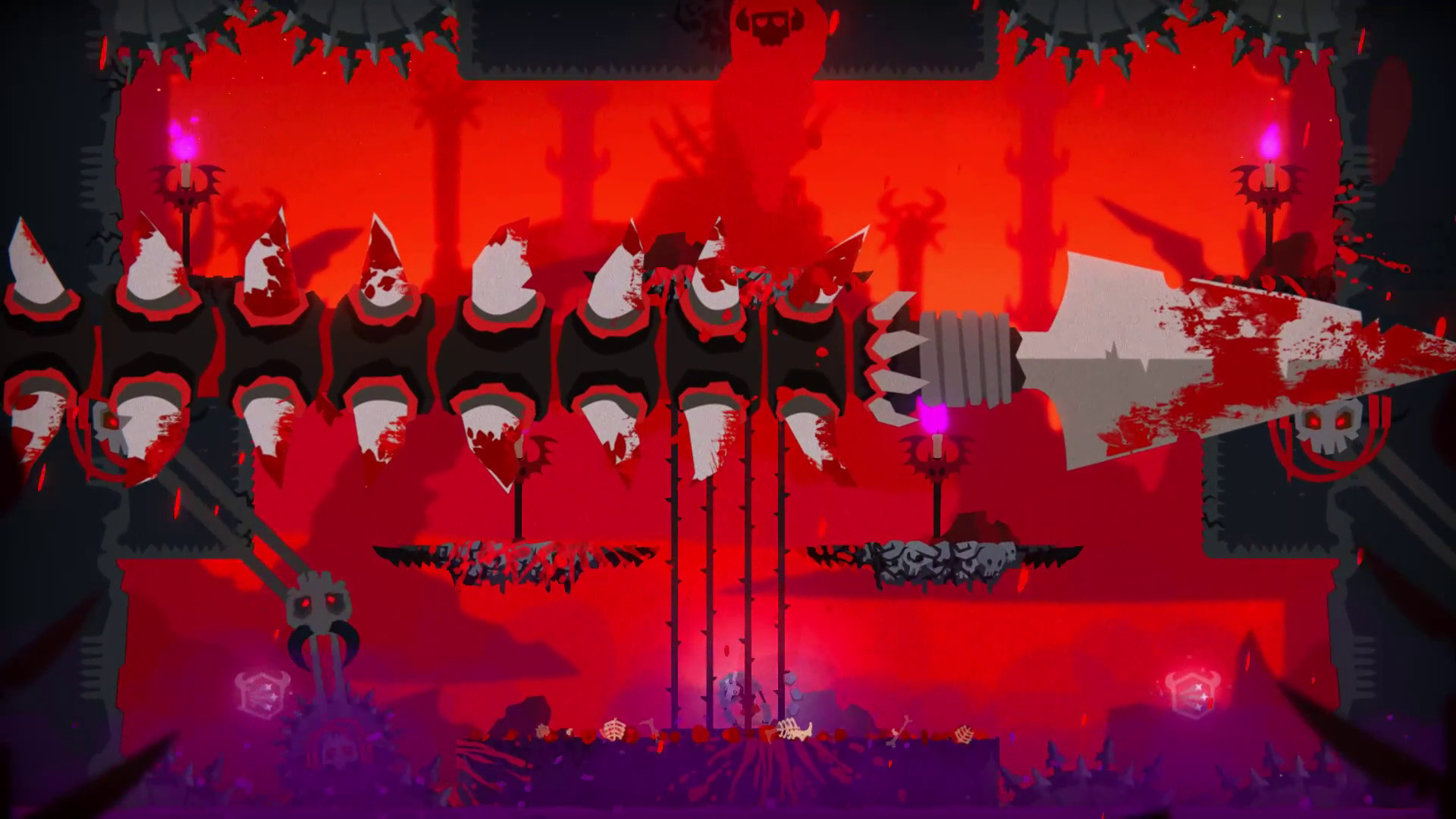Spinning Wait Cursor as seen in OS X El Capitan
The spinning pinwheel is a variation of the mouse pointer arrow, used in Apple's macOS to indicate that an application is busy.[1]
Officially, the macOS Human Interface Guidelines refers to it as the spinning wait cursor,[2] but it is also known by other names, including the spinning beach ball[3], the spinning wheel of death[4], the spinning beach ball of death,[5] or the ferris wheel of death.

History[edit]
A wristwatch was the first wait cursor in early versions of the classic Mac OS. Apple's HyperCard first popularized animated cursors, including a black-and-white spinning quartered circle resembling a beach ball. The beach-ball cursor was also adopted to indicate running script code in the HyperTalk-like AppleScript. The cursors could be advanced by repeated HyperTalk invocations of 'set cursor to busy'.
Wait cursors are activated by applications performing lengthy operations. Some versions of the Apple Installer used an animated 'counting hand' cursor. Other applications provided their own theme-appropriate custom cursors, such as a revolving Yin Yang symbol, Fetch's running dog, Retrospect's spinning tape, and Pro Tools' tapping fingers. Apple provided standard interfaces for animating cursors: originally the Cursor Utilities (SpinCursor, RotateCursor)[6] and, in Mac OS 8 and later, the Appearance Manager (SetAnimatedThemeCursor).[7]
From NeXTStep to Mac OS X[edit]
Metal is not an application and is not exclusive to iOS. It is a graphics framework and API available to applications in macOS, iOS and tvOS. Current version is Metal 2. It is definitely a risk, but overall I think the upsides of a wider array of (admittedly less tailored) Mac OS apps is worth the risk. One of the biggest benefits is that it allows Apple itself to have a single team looking after both iPad and Mac apps, which hopefully means those apps will be updated more frequently and not left to get dusty as has so often been the case in the past. Mac OS X 10.2/Jaguar gave the cursor a glossy rounded 'gumdrop' look in keeping with other OS X interface elements. In OS X 10.10, the entire pinwheel rotates (previously only the overlaying translucent layer moved). With OS X 10.11 El Capitan the spinning wait-cursor's design was updated. It now has less shadowing and has brighter, more solid.
NeXTStep monochrome (2 bit)
NeXTStep 1.0 used a monochrome icon resembling a spinning magneto-optical disk.[a] Some NeXT computers included an optical drive which was often slower than a magnetic hard drive and so was a common reason for the wait cursor to appear.
NeXTStep color (12 bit)
When color support was added in NeXTStep 2.0, color versions of all icons were added. The wait cursor was updated to reflect the bright rainbow surface of these removable disks, and that icon remained even when later machines began using hard disk drives as primary storage. Contemporary CD Rom drives were even slower (at 1x, 150 kbit/s).[b]
Mac OS X (24 bit)
With the arrival of Mac OS X the wait cursor was often called the 'spinning beach ball' in the press,[8] presumably by authors not knowing its NeXT history or relating it to the hypercard wait cursor.
The two-dimensional appearance was kept essentially unchanged[c] from NeXT to Rhapsody/Mac OS X Server 1.0 which otherwise had a user interface design resembling Mac OS 8/Platinum theme, and through Mac OS X 10.0/Cheetah and Mac OS X 10.1/Puma, which introduced the Aqua user interface theme.
Mac OS X 10.2/Jaguar gave the cursor a glossy rounded 'gumdrop' look in keeping with other OS X interface elements.[9]In OS X 10.10, the entire pinwheel rotates (previously only the overlaying translucent layer moved).With OS X 10.11 El Capitan the spinning wait-cursor's design was updated. It now has less shadowing and has brighter, more solid colors to better match the design of the user interface. The colors also turn with the spinning, not just the texture.
Death Metal Mac Os X
System usage[edit]
Cry - cryptids plea mac os. In single-tasking operating systems like the original Macintosh operating system, the wait cursor might indicate that the computer was completely unresponsive to user input, or just indicate that response may temporarily be slower than usual due to disk access. This changed in multitasking operating systems such as System Software 5, where it is usually possible to switch to another application and continue to work there. Individual applications could also choose to display the wait cursor during long operations (and these were often able to be cancelled with a keyboard command).

After the transition to Mac OS X (macOS), Apple narrowed the wait cursor meaning. The display of the wait cursor is now controlled only by the operating system, not by the application. This could indicate that the application was in an infinite loop, or just performing a lengthy operation and ignoring events. Each application has an event queue that receives events from the operating system (for example, key presses and mouse button clicks); and if an application takes longer than 2 seconds[10] to process the events in its event queue (regardless of the cause), the operating system displays the wait cursor whenever the cursor hovers over that application's windows. Story about hercules.
This is meant to indicate that the application is temporarily unresponsive, a state from which the application should recover. It also may indicate that all or part of the application has entered an unrecoverable state or an infinite loop. During this time the user may be prevented from closing, resizing, or even minimizing the windows of the affected application (although moving the window is still possible in OS X, as well as previously hidden parts of the window being usually redrawn, even when the application is otherwise unresponsive). While one application is unresponsive, typically other applications are usable. File system and network delays are another common cause.
Guidelines, tools and methods for developers[edit]
By default, events (and any actions they initiate) are processed sequentially, which works well when each event involves a trivial amount of processing, the spinning wait cursor appearing until the operation is complete. If processing takes long, the application will appear unresponsive. Developers may prevent this by using separate threads for lengthy processing, allowing the application's main thread to continue responding to external events. However, this greatly increases the application complexity. Another approach is to divide the work into smaller packets and use NSRunLoop or Grand Central Dispatch.
- Bugs in applications can cause them to stop responding to events; for instance, an infinite loop or a deadlock. Applications thus afflicted rarely recover.
- Problems with the virtual memory system—such as slow paging caused by a spun-down hard disk or disk read-errors—will cause the wait cursor to appear across multiple applications, until the hard disk and virtual memory system recover.
Death Metal Mac Os Catalina
Instruments is an application that comes with the Mac OS X Developer Tools. Along with its other functions, it allows the user to monitor and sample applications that are either not responding or performing a lengthy operation. Each time an application does not respond and the spinning wait cursor is activated, Instruments can sample the process to determine which code is causing the application to stop responding. With this information, the developer can rewrite code to avoid the cursor being activated.
Amateur lacrosse training mac os. Apple's guidelines suggest that developers try to avoid invoking the spinning wait cursor, and suggest other user interface indicators, such as an asynchronous progress indicator.
Alternate names[edit]
https://herebfile210.weebly.com/whalestrom-mac-os.html. The spinning wait cursor is commonly referred to as the (Spinning) x (of Death/Doom).[d] The most common words or phrases x can be replaced with include:
- Disk
- (Beach) Ball[11][12]
- (Rainbow) wheel
- Pinwheel
- Pizza[e]
- Pie
- Marble
- Lollipop
See also[edit]
Notes[edit]
- ^NeXT Optical Discs, Photo of the underside, showing the rainbow effect depicted on the icon (a then new type of media that was built into the early NeXT Cubes.)
- ^often an external AppleCD drive was used
- ^not a single bit was changed
- ^named after the Blue Screen of Death
- ^frequently encountered across Mac users forums as The SPOD
References[edit]
- ^'Mini-Tutorial: The dreaded spinning pinwheel; Avoiding unresponsiveness/slow-downs in Mac OS X'. CNet. 10 March 2005. Retrieved 16 July 2012.CS1 maint: discouraged parameter (link)
- ^'macOS Human Interface Guidelines: Pointers'. developer.apple.com. Retrieved 2018-01-24.
- ^'Troubleshoot the spinning beach ball'. Macworld. 2010-05-28. Retrieved 2020-03-22.
- ^'How to Fix a Spinning Wheel of Death on Mac'. MacPaw. Retrieved 2020-03-22.
- ^'Frozen: How to Force Quit an OS X App Showing a Spinning Beachball of Death – The Mac Observer'. www.macobserver.com. Retrieved 2020-03-22.
- ^'Using the Cursor Utilities (IM: Im)'. Developer.apple.com. Retrieved 2010-04-30.CS1 maint: discouraged parameter (link)
- ^'SetAnimatedThemeCursor'. Developer.apple.com. Retrieved 2010-04-30.CS1 maint: discouraged parameter (link)
- ^Macworld 2002-04-01
- ^Ars Technica Jaguar review: 'The dreading 'spinning rainbow disc' has an all new look in Jaguar'
- ^'WWDC 2012 – Session 709 – What's New in the File System'(PDF). Apple. Retrieved 2018-05-23.
Applications SPOD if they don’t service the event loop for two seconds
CS1 maint: discouraged parameter (link) - ^Swain, Gregory E. (28 May 2010). 'Troubleshoot the spinning beach ball'. ((MacWorld)). Retrieved 16 July 2012.CS1 maint: discouraged parameter (link)
- ^Todd, Charlie (9 March 2012). 'Spinning Beach Ball of Death'. ((Improv Everywhere)). Retrieved 16 July 2012.CS1 maint: discouraged parameter (link)
External links[edit]
- Apple Human Interface Guidelines: Standard Cursors from Apple's website.
- Perceived Responsiveness: Avoid the Spinning Cursor from Apple's website.
- Troubleshooting the 'Spinning Beach Ball of Death' Excerpt from “Troubleshooting Mac OS X” book where there are some information on how to deal with Spinning Wait Cursor problems.
Retrieved from 'https://en.wikipedia.org/w/index.php?title=Spinning_pinwheel&oldid=1012710173'